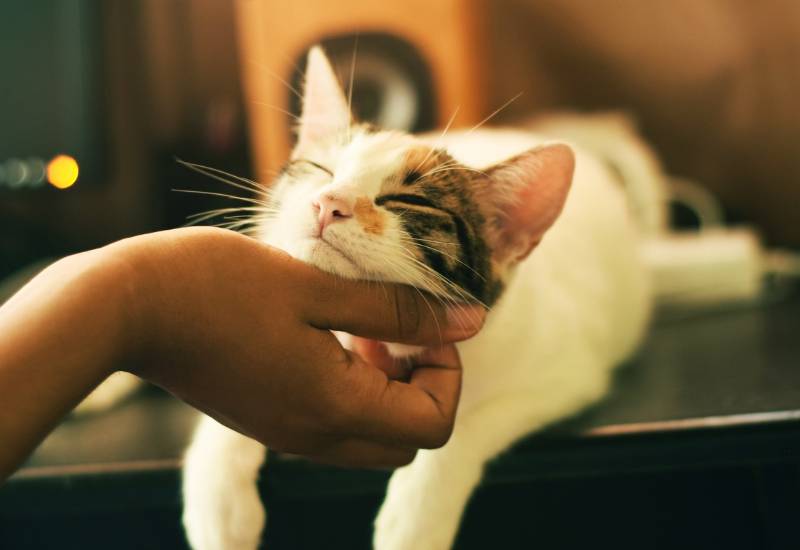
The Benefits of Pet Therapy
Pet therapy, also known as animal-assisted therapy or animal-assisted intervention, is a great way to provide a boost to emotional and mental health. Depending on the activity performed during a session, it can also benefit physical health too!
An animal-assisted therapy session can be performed either formally with the presence of a therapist or more informally without one and has been found to provide real-life benefits for a wide range of individuals, including those suffering from mental health conditions, physical disabilities, and developmental disorders.
At Urban Paws, we not only provide talented animals for use on media sets, but we can also provide experienced therapy animals to companies that run animal-assisted therapy sessions. And if you think that all therapy animals must be dogs or cats, you should see our range of farm therapy animals!
Carry on reading to find out more about the benefits of pets as therapy for mental health and many more reasons!
Health benefits of animal-assisted therapy
Any pet owners will know that there’s nothing better than getting home and being greeted by your pet. Your mood instantly improves and any weight on your shoulders is lifted, at least for a while.
There are actual scientific reasons behind this which have been tested by many studies performed on animal-assisted therapy, and they have found it to be effective at combating symptoms of mental or emotional disorders.
And luckily, we don’t just receive these quality-of-life improvements from animals that are our pets whom we have built relationships with.
So, precisely what health benefits do therapy animals provide and why is this the case? Let’s break it down in more detail.
Disclaimer: animal-assisted therapy will not be suitable for every patient. Some patients will not feel comfortable around animals and some may have allergies, for example. For this reason, it should be assessed on a case-by-case basis whether animal-assisted therapy should be used.

Mental health
There are many benefits of animal-assisted therapy in mental health, including improving mood and reducing stress.
Canine therapy has been found to reduce cortisol levels, which is the primary stress hormone in our bodies. By reducing this hormone, patients feel more relaxed and relieved of any stress that they may be under.
On top of this, interactions with pets also increase oxytocin in humans. Oxytocin (also known as the love hormone) helps you to feel happier and more positive, and it can even lower blood pressure.
There are indirect benefits to having a therapy animal present during sessions, too. For example, the presence of a calm and affectionate animal can help break the ice between patient and therapist and encourage the patient to speak freely about their problems without fear of judgement.
Emotional health
Animal-assisted therapy has been found to be especially beneficial for children and young people with special educational needs in regard to their emotional comprehension (EC).
These children may struggle to have the confidence to speak to a therapist in a conventional setting. An environment with the presence of puppies or kittens can help to make them feel more confident in communicating with their therapist.
As well, having to act as a caregiver to an animal gives young people responsibilities that contrast their usual social position as care receivers. Having to read cues from the animal and understand this is an animal with its own unique wants and needs can help to develop social competence, empathy, and emotional regulation.
Physical health
Pet owners likely know the importance of exercise more than anyone else. Taking a dog for a long walk, or even regularly grooming other pets such as a cat or a horse, can be a well-needed opportunity for mindfulness.
The physical activity involved in these actions can help people become physically fitter, which in turn can improve mood and self-esteem – as well as improve sleep quality, blood pressure, and cardiovascular health!
Some therapists may also want to conduct play sessions, or sessions while walking or performing any other physical activity involving an animal, to help their patients feel open and ready to communicate while also allowing them to experience the physical benefits of being active.
Alternative uses for animal-assisted therapy
Therapy animals aren’t just for clinical settings between patients and therapists. More and more institutions are discovering the benefits that therapy animals can have on those in their care, with two major examples being universities and elderly care homes.
University students are under an immense level of stress during exam season. By partnering with a therapy animal provider, university leaders can provide their students with a space to relax and de-stress, receiving all the benefits that we listed previously for those in clinical environments!
Therapy dog visits for seniors are also a very popular use for trained therapy animals. Elderly people often suffer from loneliness and (as a result) poor moods. Regular sessions with therapy animals provide a break from their routines that they can look forward to, where they get to interact with loving, calm animals and even give them a sense of purpose.

Pets as therapy in UK by Urban Paws
We hope that we have opened your mind to the therapeutic benefits of pets – if you were not already aware!
All therapy animals that we use either come from fully licensed and registered breeders, or rescue puppies and kittens who are looking for their forever homes. This supports animal rescue centres and the critical work that they do.
If you are a therapist, pet therapist provider, or leader of an institution, please consider getting in touch with our team at Urban Paws and we can introduce you to all of our expertly trained therapy animals.
Please note: we only provide pet therapy for corporate events and/or professional/controlled environments. We do not provide therapy animals for children’s birthday parties or other events with children under 16 years of age.
































